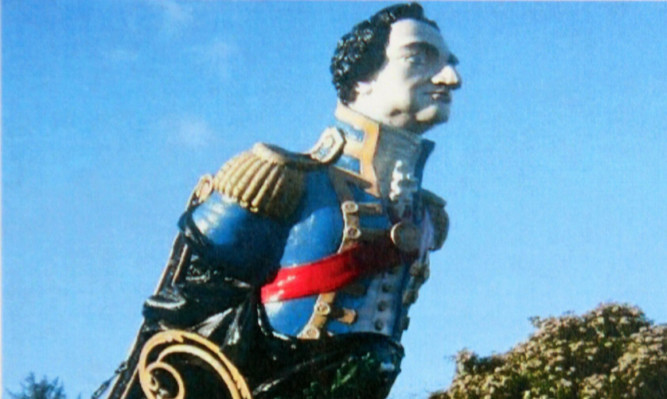Planning permission has been granted to move an important piece of Scotland’s proud maritime history.
The decorative figurehead of Admiral Adam Duncan, who famously defeated the Dutch Navy at the Battle of Camperdown in 1797, will be moved from HMS Caledonia in Rosyth to the National Museum of the Royal Navy at Portsmouth.
The Ministry of Defence (MoD) says the move will preserve the unusual piece of C-listed 19th Century naval history that has been deteriorating over the years.
Moving it will help conserve it to ensure its long-term future and also put it on display for the public to enjoy.
The painted figurehead, which is twice life size, formed part of the prow of the warship HMS Duncan.
The figure of the admiral in uniform, springing from a base of carved foliage and naval symbols, was situated in a prominent position on Caledonia’s parade ground.
HMS Duncan, commissioned in 1811 soon after Duncan’s death, was named as a floating memorial to the admiral whose battle victory changed the balance of maritime power in favour of the British.
The figurehead has been given a home at several sites but has been at Caledonia since 1997. It is now in storage to shelter it from the worst of the weather but it is still at risk from changes in humidity and dampness.
Unable to fund the conservation of the figurehead or guarantee its storage and display, the MoD had talks with the naval museum, National Museum of Scotland, Friends of Camperdown in Dundee and Scottish Maritime Museum in 2012.
The first three showed an interest but none could secure the necessary funding.
An agreement with the Scottish Maritime Museum fell through as it wanted full ownership and it is not the MoD’s policy to transfer such items out of its ownership.
Now the Portsmouth museum has offered to take the figurehead on loan.
